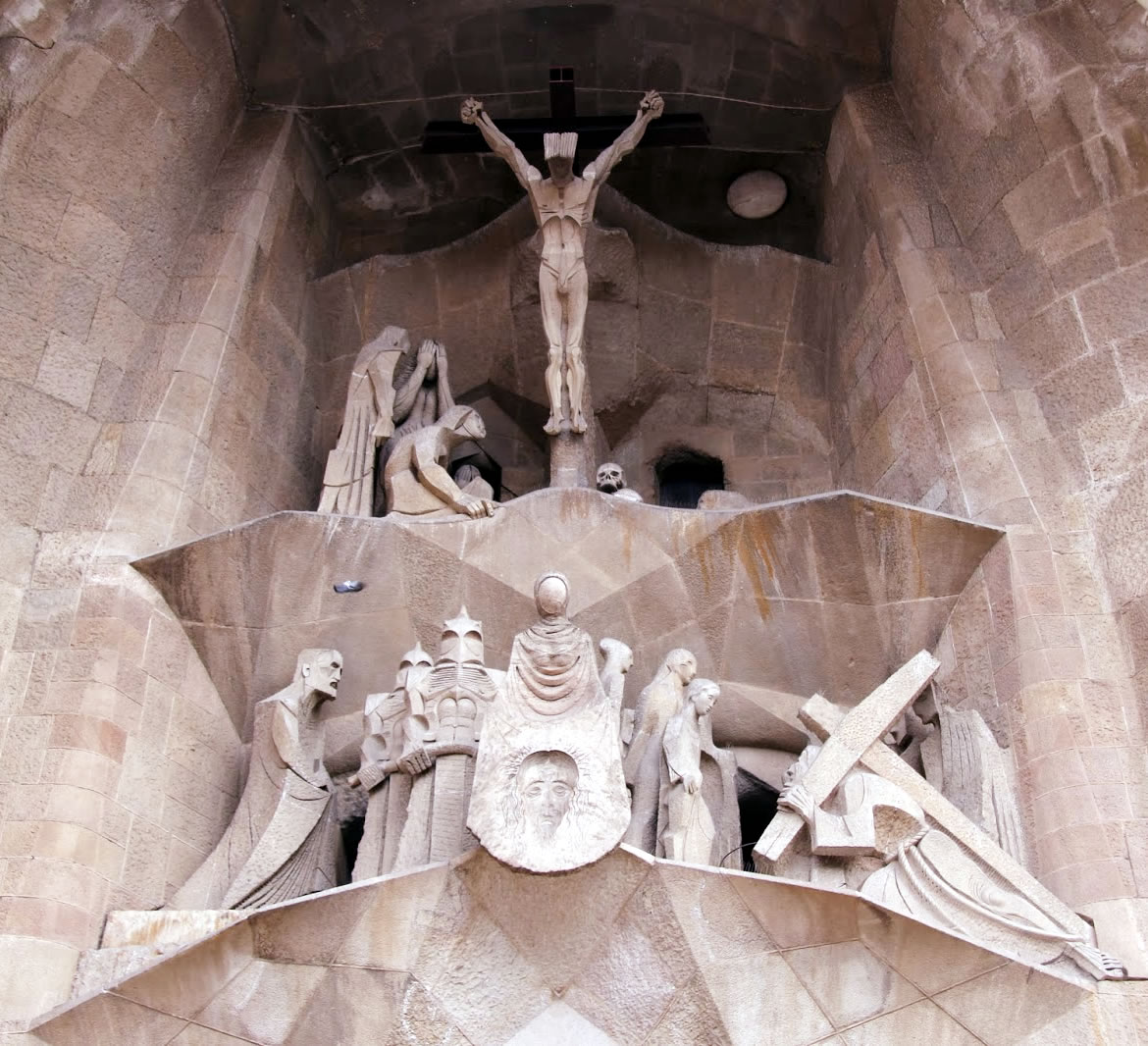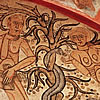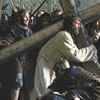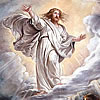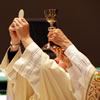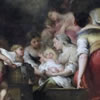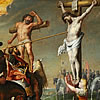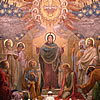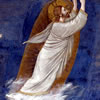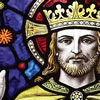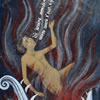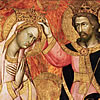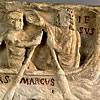How Christ's Crucifixion Saves Us
We say Christ died on the cross to save us, but how exactly does it do that? Along the years, many models were put forward by scholars and Church Fathers so there is no one single theory on how it does this. Now, just because there is no single theory, it doesn’t mean scholars can’t make up their minds about this; it doesn’t mean the theories are rendered merely as conjectures. It isn’t a zero-sum game where if we accept one we have to reject the others; instead we can accept those that jibe with apostolic teaching. If we can understand the different facets of something to get a better idea of the whole, why not? So these different models give us different ways of understanding salvation through the crucifixion of Christ.
With that, there are basically five models of how Christ’s Passion saves us. Most of these are accepted by Catholic teaching, but one isn’t. This article will briefly explain each model and why or why not it is in line with the Faith.
1. Jesus as the Victim-Victor
In this model, we understand salvation as Christ destroying death by dying. It is a paradox but it one of the fundamental models of salvation.
God created Adam and Eve to live in communion with him for all time. They had the exact same human nature we have, but if the corruptible body were to last forever in communion with God, it had to be protected from decaying. So God gave humans the gift of freedom from disease and death. In this original plan, at the end of their time on earth, Adam and Eve would be brought to a new way of experiencing God with both body and soul. This meant that the body was never supposed to die the way we experience it today. But when our first parents disobeyed God, they were in a sense saying they didn’t need him. So God gave them what they wanted: an existence without him. Of course without the gift-giver, this add-on gift of immortality of the body was also separated from mankind since it didn’t belong to human nature, to begin with. So today, when our time on earth is over, our soul separates from the body, and that is how we define death.
Behind Adam and Eve’s disobedience is the devil that tempted them. Through his malice, he brought death into the world where once it did not exist. So in this model, we see Christ allowing himself to undergo death as if vanquished by Satan’s malevolence. But the story doesn’t end there of course. Christ Resurrected, which is another way of saying that he battled death to that point it could have no effect on him. In short, he vanquished death. Now death is like a snake without its poison.
Since Christ is fully human, he is the “first-born” in a sense that he is the first to Resurrect. He brought back this gift of “immortality” to the human nature for us to enjoy. In the Catholic sense, this isn’t automatically applied to us, though. We part take of it during baptism when we choose to “die and resurrect” with Christ. Immortality isn’t applied immediately as well. It is applied when at the end of time our bodies will resurrect and be reunited with our souls so we can live forever.
2. Jesus the Reconciler
In this model, Jesus is the person who bridges the friendship of God and man that was severed by original sin.
In Genesis we see immediate effects of original sin. Adam and Eve realize they are naked – showing their distorted view of themselves. (Genesis 3:17) When God looks for them in the Garden, they hide – showing their distorted view of God that they have to hide from him in fear where once they didn’t. (Genesis 3:9-10) Through our first parents, humans became dysfunctional in relation to God and his plans.
Through love for us, the Second-Person of the Trinity became man and remained faithful to God and his commands even to the point of accepting death on the cross, thus restoring the right relationship with God. The word reconcile comes from the word “cilia”, which means eyelash. So reconcile means to be “eyelash to eyelash once again.” It is an allegory for being realigned and face-to-face the way people in good relations do. It is also an allegory of the Beatific Vision wherein we enjoy the vision of God “face to face.”
Jesus teaches us, through his actions and words how to be in this right-relationship with God. He becomes our model, and we become his disciples who learn from him. In fact, we are to be so conformed to him that we become“other Christs", and as another“Christ" we get to see God as he does – that is“face-to-face.”
Christ’s teaching is summarized in the beatitudes where he starts with “Blessed are the...” Scholars are quick to point out that the word “blessed” here doesn’t mean “fortunate”. Instead, it means “joyful” the way the saints in heaven are joyful for they behold the face of God. (Thus we call people in the process of beatification, “Blessed.”)
3. Jesus the Penal Substitute
This model was proposed by John Calvin based on the idea of God as a wrathful deity who exacts vengeance on those who disobey or slight him. The anger of God when the Israelites made a golden calf to worship is an example of this. He said: “Let me alone, that my anger may burn against them to consume them...” (Exodus 32:10) In the New Testament, John quotes Christ saying, “Whoever disobeys this Son will not see life, but the wrath of God remains upon him.” (John 3:36)
The proponents of this see God requiring an object to unleash his anger on. They see man as totally depraved, cannot be purified, and thus deserving of God’s wrath. So in this model, it is Jesus who steps in for all mankind and becomes its whipping-boy. Instead of God unleashing his anger on mankind immediately after the fall, he seethes like a steaming volcano ready to erupt, and on the appointed time directs all his hate on Jesus. Having done the justification that Jesus merits is applied to us, not to change us, but to hide our shame.
Catholics have a problem with this because we don’t see human nature as totally depraved and incapable of choosing God. Instead, we see human nature as only wounded where there is still some good in mankind but is weak. So while we can choose the “world”, we can also choose “Christ.” If there is some good in us, grace doesn’t hide our fallen nature; but works with the little good we have, changes it and perfects us little by little if we participate in it.
Another problem with this model is that we proclaim that one of God’s perfections is that he is all-good. John says it eloquently: “God is love.” (1 John 4:8) If God is perfectly good and loves perfectly, then he is incapable of actively hurting others to satisfy his blood-lust. It just doesn’t make sense. The Bible cannot contradict itself. So when the Bible refers to God’s wrath; it is a metaphor for us to understand God in human terms.
4. Christ as Sacrament
When the early Church was making sense of original sin, St. Augustine put forward that it was a frustration of God’s plan, and so God had to “include” a savior into humanity to bring it back on track. That is the premise of Models 1, 2, 5, and 6. St. Irenaeus, on the other hand, saw original sin as a necessary phase in the life of humanity.
This model follows the Irenaean school of thought: humanity is like a child who must be allowed to make mistakes for him to grow correctly. God allows humanity to fall and learn from it. He doesn’t leave us to bleed to death, but instead picks us up, binds our wounds, heals us, and rear us so we don’t make the same mistake again. God, in this model, is like a mother who nurtures us.
So in this model, Christ suffers a horrific Passion and dies on the cross to show how much God love us – the way a mother would do anything to save her children. It is, therefore, a stage in human history where mankind has matured enough to obey God out of love, and therefore growing up the way God has intended. It is a sacrament in the sense that it is a “sign” that shows, in very tangible ways, how God loves his children, and how humanity has matured.
5. Jesus as the new Adam
Created with original holiness, Adam and Eve were “attached” to God with what we call Sanctifying Grace. Think of it as an “umbilical cord” that allowed them to share the divine nature with God. With this gift, they could merit, that is, they could be rewarded by God. The important thing to consider is that mankind doesn’t deserve any“reward" from God for any works because God gave him everything, to begin with; but only by participating in the grace given by God, mankind can be“given what he deserves.”
Another important thing to consider is that man and woman were created with free will. They were free to choose to obey God or not when he commanded them not to eat the fruit from a certain tree. As we know, they abused this freedom and disobeyed him. The narrative of original sin in Genesis alludes that Adam and Eve wanted to be gods so they didn’t need God. (Genesis 3:4-5) It is an outright rejection of God.
When they rejected God, just as in Model 1, they lost the gifts that God gave them, including Sanctifying Grace. This caused a big problem for mankind because he lost the tool needed to merit. From that moment on, all his actions were finite and fell short in front of an eternal God. None of his works, not even asking forgiveness can merit from God for he doesn’t owe mankind anything. In short, without this grace, mankind could never make proper atonement.
Christ is the person who would redeem (“buy back”) our relationship with God. It is important the Jesus is God and man at the same time. By being human he represents all of humanity the same way Adam represented all humanity. And because Jesus is God with an eternal nature, his actions are also eternal and can merit. Thus his obedience undoes the disobedience of Adam, and his Passion and death were acts of atonement that satisfies God’s justice. So with his Passion, he buys back (or restores) our relationship with God to the original way God intended.
So Jesus is seen as the “new Adam” as St. Paul alludes when he says: “for as all die in Adam, so all will be made alive in Christ.” (1 Corinthians 15:22), and “The first man, Adam, became a living being; the last Adam became a life-giving spirit” (1 Corinthians 15:45)
6. Jesus the Vine
May I suggest another model that brings to life what Jesus revealed, about his relationship with the Church, when he said: “I am the vine; you are the branches.” (John 15:5) A deep understanding of this helps us realize that Christ and his Church are inseparable: they are one thing. When Saul was on his way to Damascus with the mission to arrest Christians, he heard the voice of the risen Jesus asking him: “Saul, Saul, why are you persecuting me?” (Acts 9:4) Saul was persecuting Christians, but Christ refers to himself as the one being persecuted. From this experience Paul (the Latin name of Saul) over his three years of trying to understand this, ended up calling the Church the “Body of Christ” (1 Corinthians 12:27). So while Jesus is the head, his Church is his mystical body that is inseparable from him. Being inseparable, the Church suffers with Christ in his Passion, resurrects with Christ in his Resurrection, and ascends with him in Ascension. Where the head goes, the body goes; so we graft ourselves to Christ’s body – the Church to suffer, resurrect, and ascend with him. For Catholics, we are grafted into his mystical body during baptism when we become part of the Church. It is in this participation in Christ, in doing God’s will, that we go with him in heaven.
Conclusion
All the accepted models show Christ as a figure who, out of love for us, willingly obeys the Father to undergo a shameful, gruesome and painful death. It is a mediation by one man that is reminiscent of how Moses stayed the hand of God from smiting the Israelites when they worshiped the golden calf. It is reminiscent of Abraham when he pleads for the life of the city of Sodom. It is reminiscent of how the high priest, on the Day of Atonement, begged for the forgiveness of sins for all of God’s people.
From the accepted models, this mediator battles with death and removes its fangs, heals our relationship with God and teaches us how to maintain it, represents us in a mature way to obey God with love and not out of fear. That is how we are saved, and the proper response to that is a sense of thanksgiving to Christ.
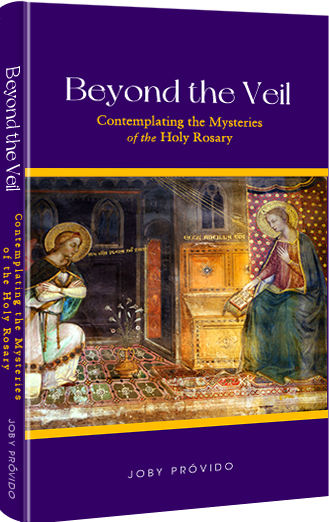
Beyond the Veil
Contemplating the Mysteries of the Holy Rosary
Prayer giants like Pope St. John Paul II, Pope Paul VI, Bl. Archbishop Fulton Sheen, and Bishop Robert Baron advocate that we contemplate on the mysteries of the rosary while we say the vocal prayers. Unfortunately, there are not many books that teach us how to do this. Beyond the Veil comes to the rescue by suggesting seven ways we can pray the rosary the way it was intended.
The larger part of the book offers mental images for each of the mysteries we can use in our contemplation, for how can we imagine the scenes in the rosary if we don't know about them?
Get your copy now either in Hardbound, Paperback, or Kindle
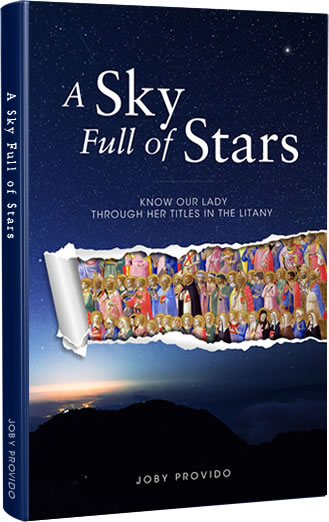
A Sky Full of Stars
Know Our Lady through her Titles in the Litany
The Church helps us understand who Mary is by honoring her with different titles in the Litany of the Blessed Virgin Mary. Unfortunately, over time and difference of culture, we might not grasp what it is the Church is ascribing to her and lose that opportinity to get to know her.
In A Sky Full of Stars, each title of the Litany is explained so we get know Mary more and fall in love with her all over again.
Get your copy now either in Hardbound, Paperback, or Kindle
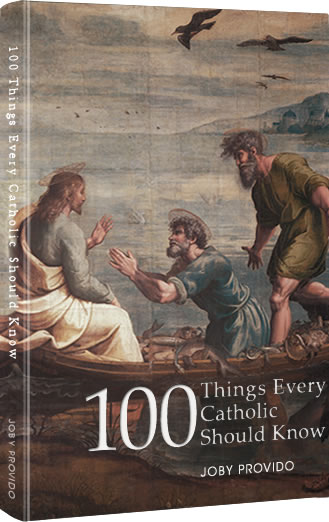
100 Things Every Catholic Should Know
Whether or not you are new to the Catholic Church, or struggling, or lapsed, or dynamically involved, this book will enlighten you with the essentials of the Faith that have been handed down to us by the apostles.
Each of the 100 topics is easy to read and distilled into bite-sized portions. Through cross-referencing, the book also shows how the topics are interrelated. Those who are new to the Faith will find this book an edifying handy reference, and those who have simply forgotten will find it a great review material that might spark a new love for God and religion.
Get your copy now either in Hardbound, Paperback, or Kindle
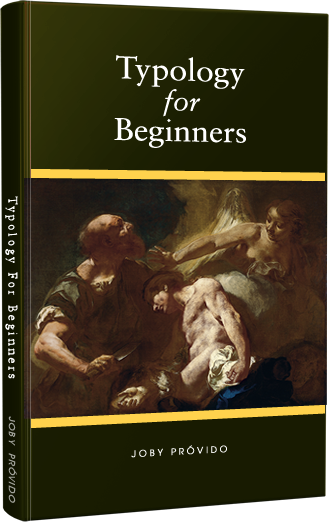
Typology for Beginners
A Catholic Perspective on understanding the New Testament through the Old Testament
First-century Jews converted to Christianity in droves because of the way the New Testament was written to show Jesus was the Messiah promised by the Old Testament. We also learn about how Mary is the New Eve and the Ark of the Covenant in the way the writers portray her.
Through typology, the patterns that connect the Old and New Testaments make the Bible stories more accessible so that one becomes excited to read Sacred Scripture again.
Get your copy now either in Hardbound, Paperback, or Kindle


